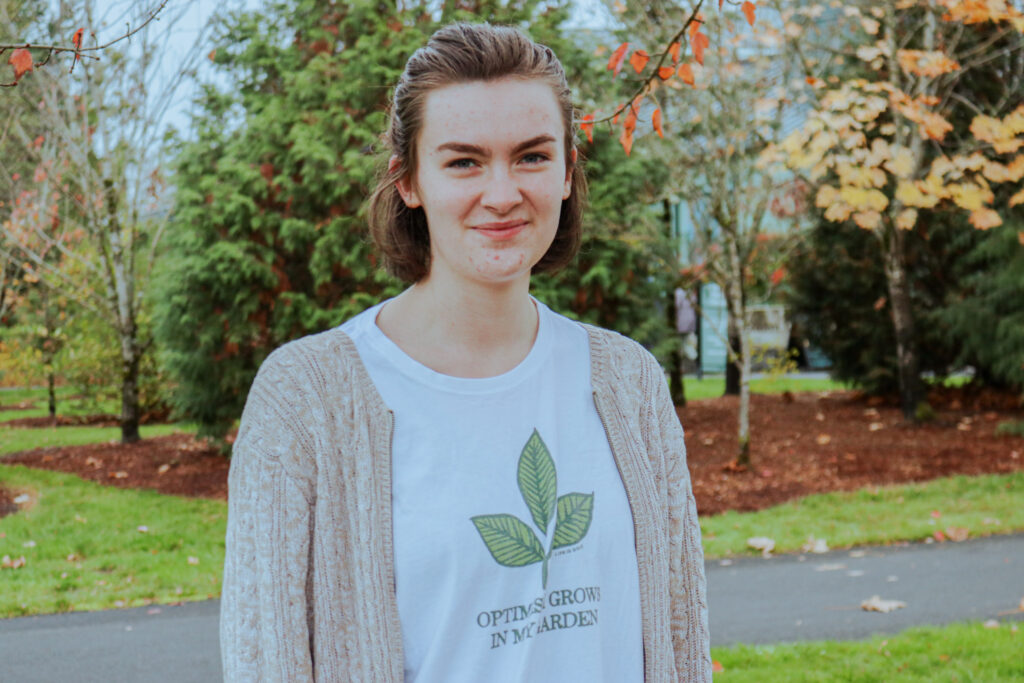At the closing of each semester, feelings of anxiety accompany an onslaught of exams, papers and projects. With finals week slowly creeping in, students are looking for a sense of mindfulness to prepare for the stressful times ahead.
According to a 2019 study by professors at East Carolina University, “…approximately 62% of college students report experiencing anxiety in the last 12 months. Of those students, approximately 27% stated that their anxiety had taken a negative toll on their academic performance.”
Practicing mindfulness, a mental state that allows one to focus on the present moment is a useful tool to ease stress and create a sense of balance in everyday life.
Caitlin Bletscher, an instructor of the Communication and Life Skills course at WSU Vancouver, says developing mindfulness skills require ongoing practice. Once those skills are solidified, choosing to adopt mindfulness techniques serves students who are looking to work through internalized feelings of stress.
“It’s like muscle memory. The more times you engage in the practice, even if it might seem silly, it becomes more habitual,” Bletscher said. “Practice it as if you’re going to the gym, the more times you practice it, the more times it will come up, especially in times you need it most.”
Emma Thomas, a sophomore social sciences major, is teaching mindfulness skills as an assistant for the class. According to Thomas, mindfulness is an accessible task that does not require excessive preparation or effort, and achieving mindfulness will look different for everyone. She also says these skills are beneficial for students struggling to maintain a sense of stability between their personal and academic lives.
“How can we think about or look at meditation and mindfulness in an accessible way?” Thomas said. “[Mindfulness makes] people feel like ‘yeah, I can do that, I can take three breaths before I take a test’… and that can be a huge benefit.”
“Trying new things is scary. … But, maybe you’re not as new to it as you think you are.” – Emma Thomas
To provide a few examples, mindfulness practices suggested by the Mayo Clinic include body scan meditation, sitting meditation and walking meditation.
Body scan meditation begins with the individual lying in a flat position, with arms extended to focus on sensations, emotions and thoughts associated with each part of the body. Sitting meditation is similar to body scan meditation, but focuses on allowing unwanted thoughts into the brain, taking note of them and then re-centering back to the breath. Lastly, walking meditation includes finding a quiet open space and slowly pacing with a sense of heightened awareness, and maintaining subtle movements to keep balance while walking.
When practicing these skills in between classes, Thomas says the campus’s outdoor layout is the perfect sensory opportunity to connect with nature.
“I think my favorite thing that happens on a regular basis related to campus is the ability to constantly be walking around in nature, just because of the architecture of the campus…. It’s a very grounding experience to be in nature, even when I have just come out of a stressful experience, or even a positive experience when my mind is busy. I love the opportunity to have a little bit of [an outdoor] transition point between [times of] productivity,” Thomas said.
Calm Moment, a blog centered around self-care says, “Mindfulness can help all students (struggling or not) be more productive; it can help reduce depression, low moods, low self-esteem, and anxiety; it increases well-being, self-compassion, compassion towards others and increases emotional resilience.”

Although there are many advantages of mindfulness, one of the biggest issues people face when meditating is intrusive thoughts. As stated in a healthcare article by Forbes, “Our brains do a lot of chattering without our permission. When left to its own devices, the mind tends to ad-lib for extended periods, and the reality is that much of the chatter is negative, usually revolving around fear and worry-based thoughts.”
Alyssa Zoller, a freshman entrepreneurship major currently enrolled in the class, says she is learning how to avoid her intrusive thoughts through a specific technique.
“I’ve been able to recognize those unhelpful thoughts in my life and put a twist on them.… There’s this silly voice technique where you say the unhelpful thoughts [in the voice of] some movie character, cartoon characters voice and then you just kind of realize what it looks like from someone else’s perspective, and just how trivial [those thoughts] may be,” Zoller said.
According to Thomas, allocating time to the present moment is sometimes all it takes. With daily rounds of mindfulness practice, college students can take advantage of the skills they are developing to create a balanced and calm environment during stressful times.
“Trying new things is scary,” Thomas said. “But, maybe you’re not as new to it as you think you are.”

Bethanie is a senior studying environmental and ecosystem science at WSU Vancouver.
